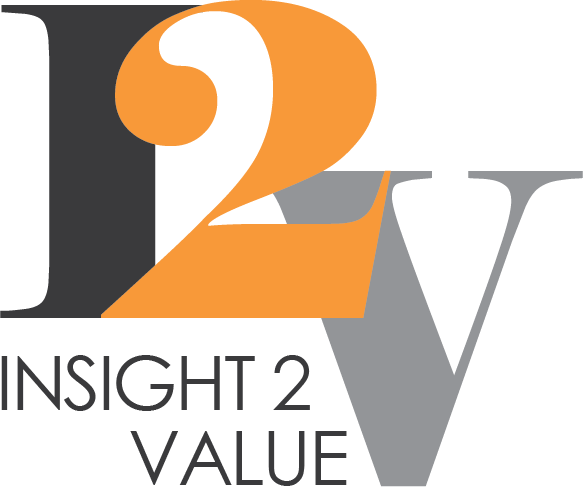We talked to Tom Price about how two Insurance companies are improving their customer servicing in different ways by embracing the flexibility of IBM’s Capture products.
In this blog, Tom shares:
- The different forms of Capture over the last ten years
- His experiences with IBM’s Datacap solution
- How two Insurance companies have embraced document capture
The different forms of document capture over the last 10 years
I have been working with ‘capture’ for about ten years now. Initially, it was paper scanning in a centralised mailroom environment. There would be x number of people with x number of scanners receiving mail, manually sorting the mail, scanning it in and usually supplementing it with some information, e.g. the type of document, invoice, application etc. It may have gone through a very naive OCR process (Optical character recognition) to extract text, classify the document and pull out key bits. From my experience, the main driver around ‘capture’ from a paper perspective at that time was dealing with Invoices.
Capture has changed with the times
2015 seemed to be the turning point where people began to be interested in acquiring content from other sources. This ranged from emails from a location or a file share, disparate worldwide scanners/multifunction devices, using a mobile phone to take a photo of the content and submit via an email or using an app or other front-end. It became more common to perform on-device image enhancements to correct the skewing, file size, or image quality.
These days, there are usually disparate sources. I can think of a company with small mailrooms across the entire globe. Content is scanned and acquired locally and then pushed over the web, or their wide area network, into a central location. This is then processed and sent to another team, where they are indexed.
It’s a digital world.
Over the last ten years, I have seen a move away from paper to digital sources. The digital sources are primarily email, but also API based or, more recently, data entry by robot (robotic process automation). I haven’t seen a fax for about eight years, although there are banks who still will receive faxes, essentially to a virtual fax machine, which creates a digital image and emails it.
What do you like about IBM Datacap?
The main power of Datacap is that it is an incredibly flexible enterprise platform which comes with a set of Libraries which contain Actions. Actions allow you to perform things. They are similar to coding methods in that you give it some inputs, and it does something to give you an output. An example would be to calculate all the line items on an invoice to make sure that the extracted amounts matches with the total and therefore validates them.
Rules provide you with the business logic layer as well as the underlying processing layer. They can be extended to include things such as ‘run this type of OCR on these type of documents’, ‘classify this’ and calling out to external services such as IBM Watson. The rules are the building blocks of what you want to achieve. They effectively mimic the manual processes we do as humans. For example, If I look at an invoice, I might be looking for a barcode or a signature, and I might mentally calculate that the invoice total matches the invoice rows.
Datacap’s rules engine is very powerful. The way you build things is highly logical and very structured – similar to programming in the way it’s put together. There’s the notion of a hierarchy of document formats – e.g. in this batch of content we’re expecting three documents, an invoice, a cover letter and a supplementary form. They are essentially objects, and the rules that set the actions are like methods on an object, and you run them in a workflow to meet the end goal.
Helping the customer understand the art of the possible
I’ve become experienced in giving customers feedback about how best to achieve their goals. If you put a document in front of me, I could probably tell you how well we could capture the data, how well it would fit with OCR and how variable the document is likely to be. Understanding the document and giving feedback and recommendations as to how that process can be improved is vital. That might be supplementing their outbound correspondence to customers with something to improve the process. You want to give the Capture product the best chance of automating the process.
A new way of ingesting documents for an Insurance company
One of Insight 2 Value’s strengths is understanding our customers’ areas of business and the types of documents they receive.
In 2015, Insight 2 Value ran a series of discovery workshops and exercises for an insurance company to understand how their Document Management Centre (DMC) operated.
At that time, there were significant paper volumes which were manually scanned and sorted without any classification or identification. Their mission was to automate more of the process because, at this time, there was zero straight-through processing.
Along with implementing an IBM Datacap Capture system, we made recommendations to improve their documents. We suggested,
- Adding barcodes
- Standardising forms
- Implementing a release cycle around the forms so that Datacap would be able to interpret and understand them easily
- Constraining the data
- Making sure the key, high-level pieces of information on those documents can be easily identified.
This helped determine the document type and where the information could be captured.
Within Datacap, you set up a document and select the fields of interest. It gives you a view of the data that was extracted before a human and the data that was extracted once a human had seen it, and you can compare the two. You also have a trail to see if Datacap was sufficiently confident to bypass the human step.
Over the years, the market has evolved from several thick-client centrally based scanners into web-based scanning. This allows anybody in the organisation, at any time, to connect to a scanner and scan information. That can be via a physical scanner or also imported via a disc. If they have something on their laptop, they can import that through the Content Navigator scanning interface. Once the images have been imported, Datacap runs a set of rules which automatically separates the documents, identifies the documents and ensures they are in the correct order. It highlights any validation issues, de-skews, checks the scan colours etc. and determines the best course of action based on the information it receives. Then, that batch is pushed through, using REST services to the central server, which does all the heavy lifting.
One of the benefits of moving to web-based scanning is availability. In the old world, if a workstation died that was attached to a scanner, someone from IT would have to come down to reinstall all the software and get it working. Now, they can take their laptop to the scanner, plug it in, fire up their browser, go to Content Navigator and carry on. At times of peak volumes, they have other scanners that are sitting around not being used. They can spin those up in seconds, which was massively helpful during the pandemic.
Email capture
The other major project we assisted with was bringing email capture to fruition. They are processing about 10-13 thousand documents or emails a day, with a projected year-on-year increase of 15%. Using Datacap, emails come through to be automatically extracted. We take the original email and look at the attachments. Next, we run some processing on the attachments to identify key pieces of information, such as a claim number. That claim number is used to validate the nature of the claim. All of the information is audited and emitted for reporting. It gives the company all of the Management Information that they need to ensure the smooth operation of the business.
At the end of last year, the amount of straight-through indexing and allocating was around 80%. To increase this percentage, we provided controls around how attachments are used to extract information. We have given them the ability to easily configure, from a business point of view, what types of attachments need to be searched, in what order and to what depth. By depth, we mean, for example, that if it is a pdf attachment, we will search the first ‘x’ pages. This is because after the first two pages, if there isn’t the claim number, vehicle registration, policy number or person’s name and address to allow us to link back to the claim and identify the correspondence type, then we can assume it isn’t going to be in the rest of the document. It allows us to limit the amount of processing we do and make sure that we tread that fine balance between processing time versus positive outcomes.
We’ve also given them the ability to identify challenging 3rd party senders. This allows them to go back and discuss how things can be improved – or potentially put in specific functionality to handle those cases.
As a result, 90% of their inbound email is automated, classified and indexed – and that number is rising. No human needs to see it in order to index and allocate it, which is a huge productivity saving.
The Exceptions process
The remaining 10% of email goes through an exceptions process involving humans. This particular customer uses IBM Case Manager for this, but it could be achieved with Datacap. The chances are that it has hit the exceptions team for two reasons. Firstly, no information in the correspondence identified who it was from or to which claim it is related. This would usually require the exceptions team to go back to the customer. Secondly, perhaps a validation error occurred because there were two claim numbers in the documents, and Datacap couldn’t be certain to which claim to allocate the document.
What was the impact of the covid pandemic lockdowns?
This customer was at a big advantage. The exceptions process is entirely web-driven and could be done remotely. During the covid lockdowns, they did not need to have a human presence in their Document Mail Centre, apart from two employees to deal with the small number of physical paper documents. The rest of the team – about 60 employees – could continue working safely at home, logging on to their systems via a VPN.
Another Global Insurance customer
In contrast, another of our customers uses a similar solution but has a different organisational culture. Neither is more ‘correct’, but it is interesting to compare.
This global insurance company insists that every piece of content is ‘eye-balled’ by somebody. Only a very small proportion of the content they receive is automatically indexed and pushed straight through. It’s not that the software can’t do it. To date, it has just been a requirement of that company.
Most of the documents they receive are standard fixed-form documents for products such as life insurance. They are high-value from a monetary and a risk aspect, so there needs to be a high level of control. The Capture of information lends itself well to being automated, and that is something they now are exploring.
As a global company, they ingest content from several locations worldwide. It is a 24/7 process between the UK and a team in the Far East. Up-time is critical. The system has to be robust in terms of transmitting data securely across disparate long-distance locations to a central placement.
The company are also doing web-based data acquisition from scanners and local file systems in remote locations. They have enjoyed the benefits of rolling out a central web-based application available to all the users.
Unlike the automation mentioned in our previous customer example, this company relies heavily on a remote process of indexing/verification using a large team in a remote location. They have decided to remain on a thick client for their indexing – accessed via Citrix/VDIs. We have built indexing screens tailored to their requirements. They have a set process for indexing a document. First, they Classify the document, work out what it is about and then Index it against a customer policy or business area. That involves lookups to external systems, which pulls back all the information they need. We also supplemented it with a full audit trail for legal reasons. If the document is changed in any way, we capture who did it and when and make a backup of what they did. There’s a workflow concept of Review and Deletion so they can have other people can review it.
Overall, the emphasis is much more on control and auditability rather than the goal of straight-through processing.
It’s the same product used differently. Horses for courses, if you like, with the same result of tangible business efficiency.
Thank you Tom, for taking the time to share your experiences with Capture. If you’d like to have a free inbound document review Contact Us



